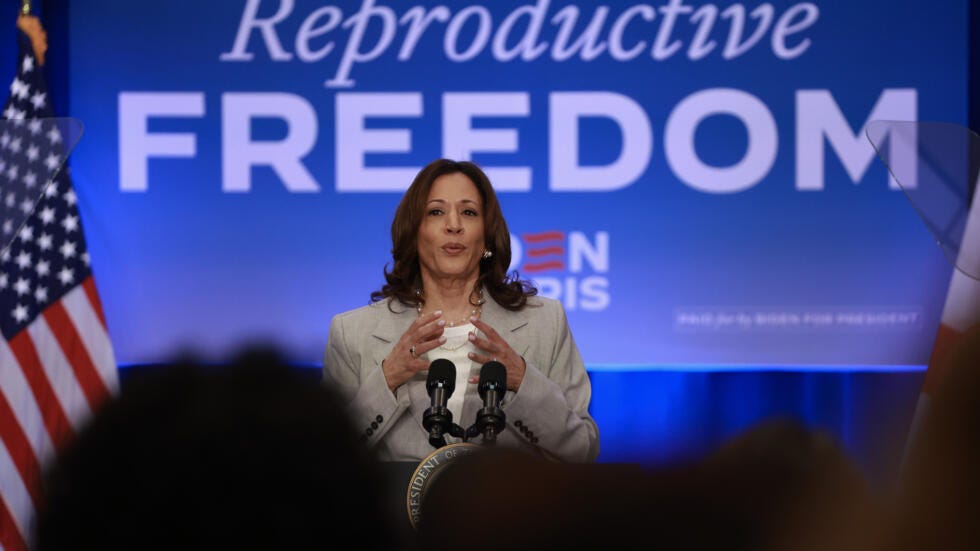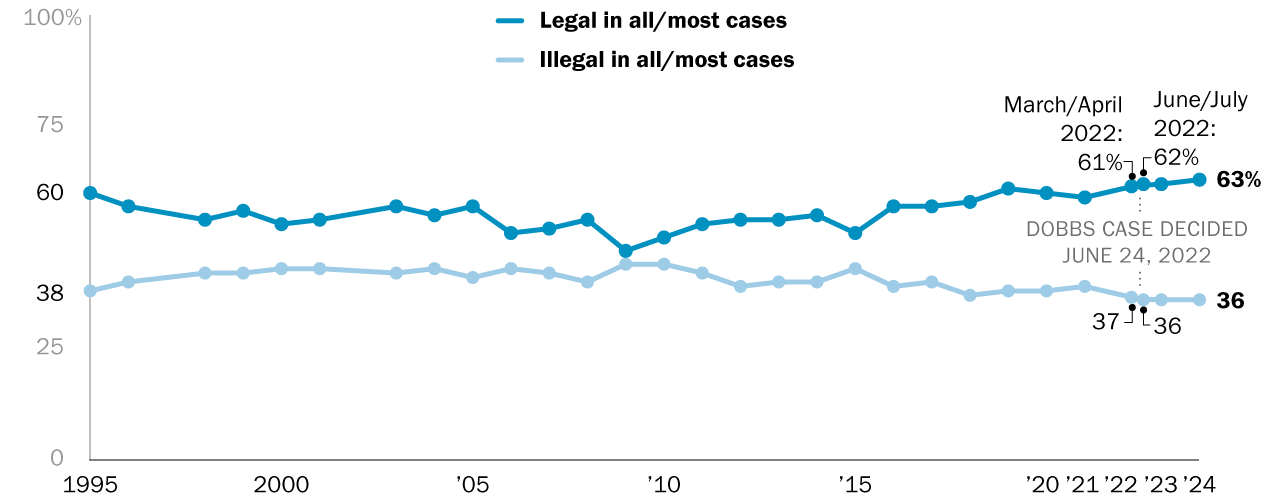By Steve Schear
“I agree with that,” Sally told me after we had talked about abortion for a few minutes. Sally lived in a working class neighborhood of Zanesville, Ohio. I was talking to her in October 2023 while canvassing in support of Issue One, an initiative to give Ohioans a state constitutional right to abortion. Sally believes that human life begins when a sperm meets an egg, but she agreed with me that women and their families — not the government — should decide on the legality of abortion. And then she agreed to vote “yes” on Issue One, even though she opposes abortion.
Before I talked to Sally, I spent a month in Ohio talking at length to eight Republicans, researching how to persuade them to become Democrats. Most opposed abortion, so I had in depth conversations about the issue. I’ve also talked to numerous Republicans about abortion while canvassing in purple states in both 2022 and 2024.
Here’s what has worked for me, not just with Sally but at the doors of abortion opponents — over and over again.
First, Listen
I start by asking how the person feels about the issue. Voters can express reservations about abortion in many different ways. “I’m pro-life.” “Women are using abortion as birth control.” “Abortion is traumatic for women and they regret it later.” “I don’t believe in murdering babies.”
The Sperm-Egg Question
Next, I ask if the voter thinks that when a sperm fertilizes an egg, those two cells are a human being whose life should be protected. Some say yes, most don’t. Some offer another cut-off date for abortion, from 6-15 weeks.
However the voter answers, I say, “I respect people who think a fertilized egg is a human being. I can understand that viewpoint, even though I don’t agree.” Then I proceed to other common cut-off dates.
“Some people believe that six weeks, when there’s a fetal heartbeat, is the right date to ban abortion,” I say. “I respect that viewpoint, too. Some think 10, 12 or 15 weeks is the right time to prohibit abortions, I’m not sure why. Some think the right cut-off is at fetal viability, when a fetus can live outside the womb, around 23-24 weeks. That’s the Roe v. Wade rule. And some believe that you’re not a human being until you are born.
“I respect all those viewpoints,” I say. “It’s a difficult issue. People have real moral, philosophical or religious reasons for believing what they do.”
Next — Who Should Make The Decision?
“I just think it is women and their families who should be making that decision,” I finally say. “Not the government.” After hearing the issue presented this way, abortion opponents very often agree that women and families should have the right to make their own decision about abortion.
In March, I spent a week canvassing in Tucson collecting signatures to put abortion access on the state ballot. Local organizers gave me permission to knock on the doors of all voters, not just Democrats and Independents. That gave me a chance to talk to 15 Republicans about abortion. Nine of them agreed to sign the abortion access petition.
Why It Works
This approach is not oppositional, it is cordial. I always maintain a posture of friendliness and respect for whatever the abortion opponent says. Over and over again, I use the word “respect.” That allows the voter to hear me without triggering anger or defensiveness. It makes it much easier to agree with me, too.
Kamala Harris uses a similar approach. She says that women should be making decisions about their bodies, not the government. Her approach also appeals to people who think the government should not be involved in their private lives. But at the doors, the longer discussion I’ve described works better.
Other than people who believe that a human being exists at conception, most abortion opponents don’t have firm beliefs about when abortion should be banned. Most often, they oppose abortion because they believe a fetus is a baby that shouldn’t be killed. But the 10, 12, and 15 week abortion bans have no real scientific or religious basis. By pointing out how many different cut-off dates there are, it helps voters see that there is no clearly “right” answer to when abortion should be banned. That creates the foundation for the finish line - who should decide.
The idea that women and their families — not the government — should decide has a strong emotional appeal to Republicans. Virtually all have a deep-seated distrust of government, and that emotional aversion makes people move from opposition to abortion as a general principle to the view that women and families should decide.
The inclusion of “families” also helps because most Republicans have a strong pro-family belief system. Having “women and their families” be the deciders makes it easier for them to accept reproductive rights.
Reducing Opposition to Abortion Will Help Us Win Elections
Although a majority of U.S. voters favor reproductive rights, opposition to abortion remains one of the biggest obstacles Democrats face this fall. According to the Pew Research Center, 36% of U.S. adults oppose abortion in all or most cases. Reducing Republicans’ opposition to abortion makes it significantly easier to get them to vote for Democrats.
You don’t need to follow this method exactly. It’s important to go with the flow of the conversation, to listen to what voters have to say, and to address their concerns. If you do try this approach, I’d like to hear how it goes. Send me an email at steveschear@gmail.com. It would be helpful to know if my results are replicable and scalable. And if you have questions about how to use this method, feel free to email me, too.








I found this very helpful and tried to share on FB. I got the spam warning and couldn't post. I tried several ways but was stopped at every turn.
Steve. Thanks for this easy to understand outline about a topic that scares a lot of canvassers. I found this argument https://spot.colorado.edu/~heathwoo/Phil160,Fall02/thomson.htm but it's too dense to be very useful.